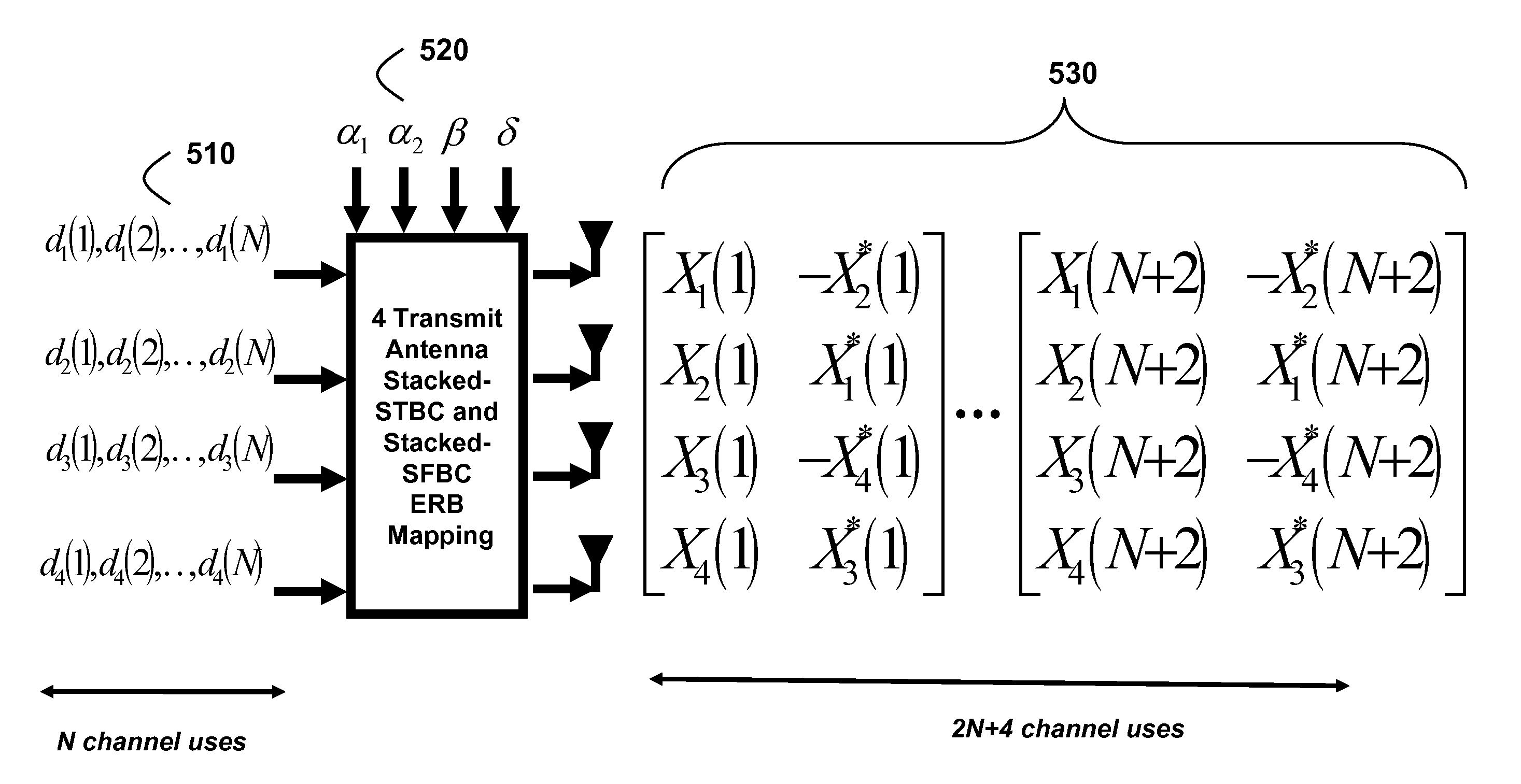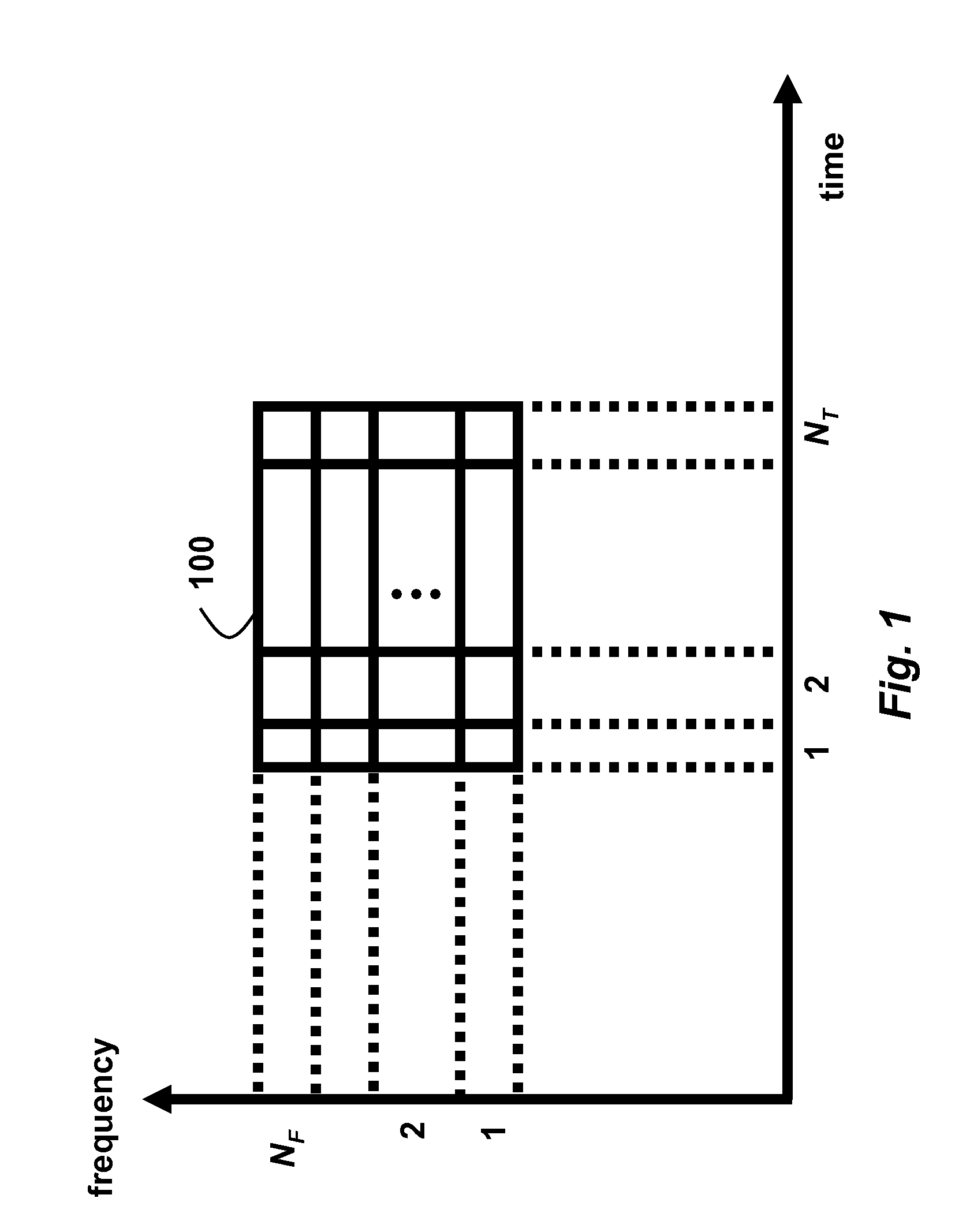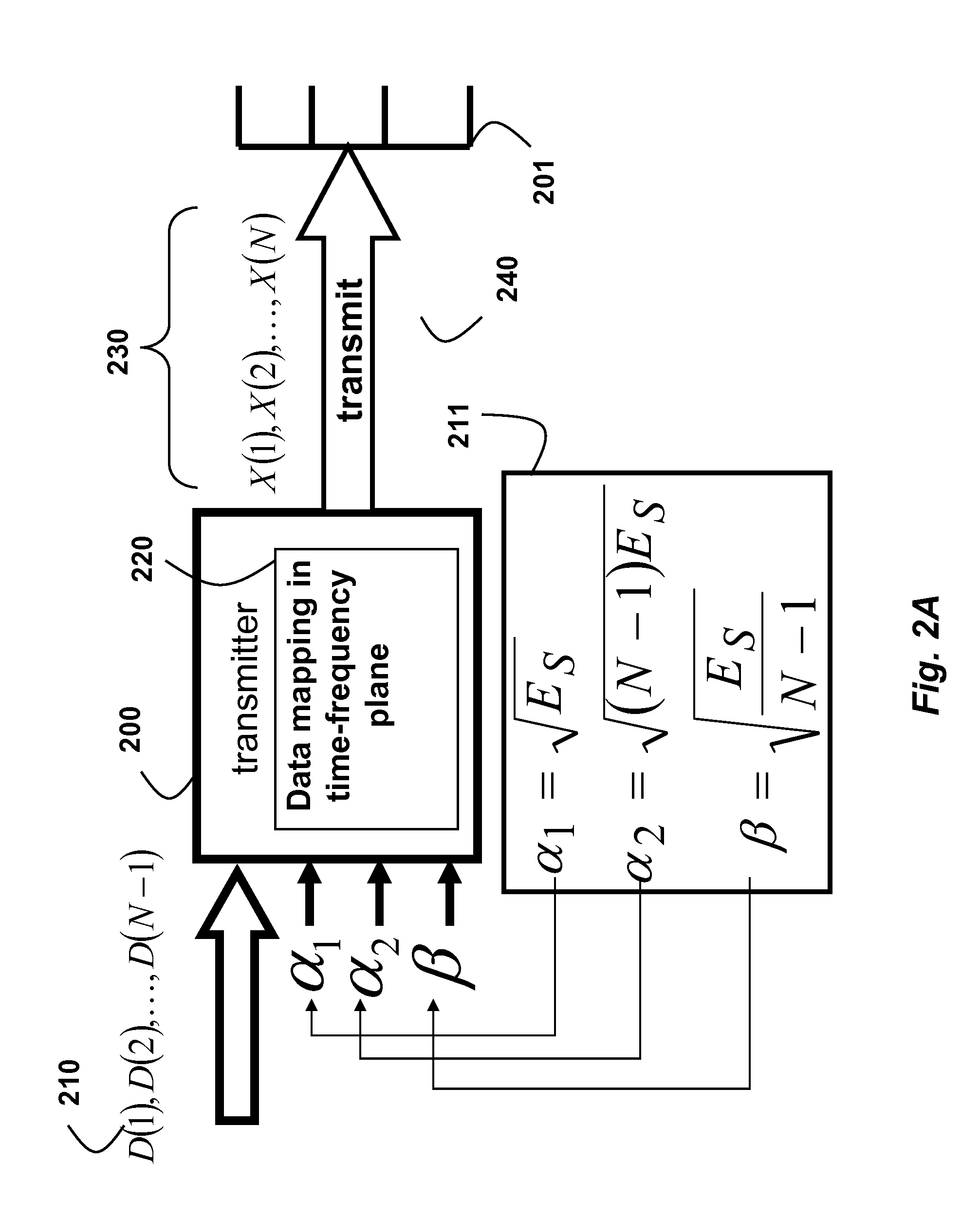Method for Encoding Data Symbols with Implicitly Embedded Pilot Symbols in Resource Blocks for Wireless Networks
a technology of wireless network and pilot symbol, applied in diversity/multi-antenna system, multi-frequency code system, transmission path sub-channel allocation, etc., can solve the problem that the fixed number of pilot symbols might not be sufficient to estimate a rapidly varying channel, waste power, time and bandwidth (frequency) that could otherwise be used to increase the data rate, and separate transmission of pilot symbols, etc. problem, to achieve the effect of improving the overall network spectral efficiency, improving channel estimation accuracy, and saving resources
- Summary
- Abstract
- Description
- Claims
- Application Information
AI Technical Summary
Benefits of technology
Problems solved by technology
Method used
Image
Examples
Embodiment Construction
[0025]FIG. 1 shows an embedded resource block (ERB) 100 according to embodiments of our invention. In a two-dimensional time-frequency plane, the ERB is described by time-frequency resource units spanned by NT consecutive data symbols over NF consecutive frequency (or sub-carrier or sub-channel) tones. Each symbol is selected from a set of modulation constellations and represents data to be transmitted. It is noted that different symbols can be selected from different constellations. Thus, effectively, the symbols can be selected from a set of one or more of modulation constellations.
[0026]In wireless communications with orthogonal frequency-division multiplexing (OFDM) modulation, the channel coherence time is defined as the number of consecutive OFDM symbols during which the channel remains constant. The channel coherence bandwidth is defined as the number of consecutive subcarriers over which the channel remains constant.
[0027]The channel coherence (c) in the time-domain (T), in ...
PUM
 Login to View More
Login to View More Abstract
Description
Claims
Application Information
 Login to View More
Login to View More - R&D
- Intellectual Property
- Life Sciences
- Materials
- Tech Scout
- Unparalleled Data Quality
- Higher Quality Content
- 60% Fewer Hallucinations
Browse by: Latest US Patents, China's latest patents, Technical Efficacy Thesaurus, Application Domain, Technology Topic, Popular Technical Reports.
© 2025 PatSnap. All rights reserved.Legal|Privacy policy|Modern Slavery Act Transparency Statement|Sitemap|About US| Contact US: help@patsnap.com



